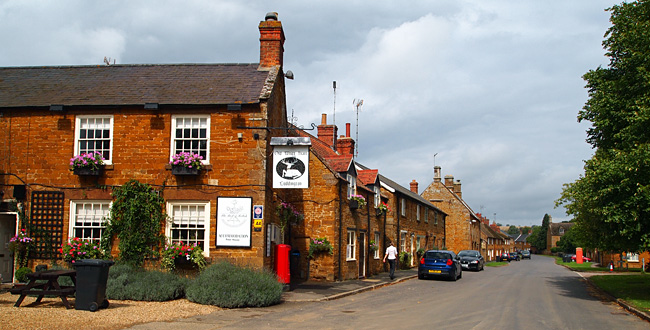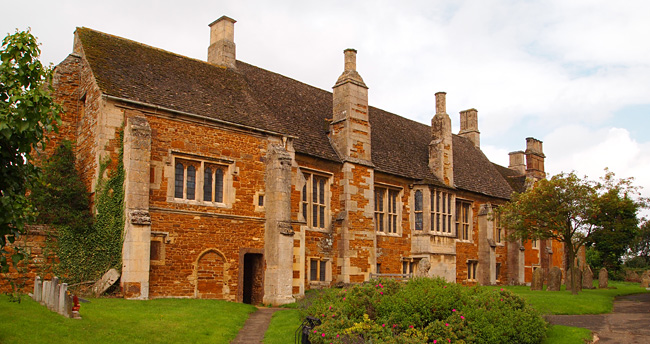Lyddington is a pleasant rural village in the county of Rutland. The settlement is classically arranged along a single main street, forming a double row of ancient stone and slate roofed houses.

Main Street, Lyddington © Travel About Britain
Most of the older dwellings are built of local brown ironstone, and several cottages display date-stones that make it possible to trace the architectural change from Jacobean to classical style.

Church of St Andrew © TAB
The mainly Perpendicular Church of St Andrew is noted for its medieval wall paintings and brasses. Alongside the church stands a restored 15th century bishop's residence named Bede House.
The bishops of Lincoln used the village as a travellers rest since the time of King John and retained a manor house here from about 1200. The present Bede House was built by Bishop Russell in the late 15th-c. The spacious Great Hall on the first floor, where the bishops once held audiences, has stone-mullioned windows and a magnificent carved oak ceiling, typical of the period. The name Bede is derived from the old English word "biddan", meaning to pray.

Lyddington Bede House © Travel About Britain
The manor was surrendered to Henry VIII in 1546. In 1602 Thomas Cecil, Earl of Exeter, converted it into an almshouse, with a row of cell like rooms, each with a bed and a cooking hearth. The property is run by English Heritage and open to the public from Wednesday to Sunday, 10am to 5pm.
At the southwest angle of the precinct is a watchtower, with views out over the village street, known as The Bishop's Eye. Depressions in the ground to the east of the village are the remains of a network of medieval fishponds.
Map of Lyddington
The Midlands

